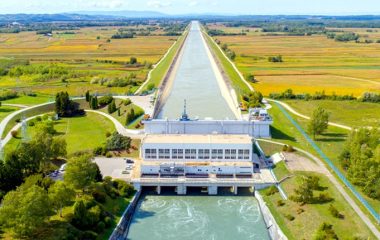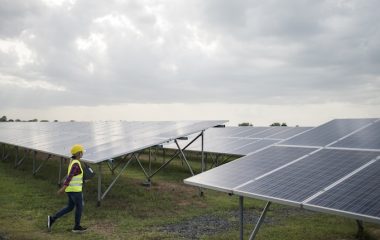
Naser Miftari, high school teacher from Kumanovo in Macedonia, and his former student Bujar Dalipi, who studies applied sciences in the capital of Albania, invested two years of hard work in two endeavours, called Drita (Light) and BuNa, for which they were awarded. The duo feels these projects are the future of energy, a report by Anadolu Agency said.
Drita is the direct conversion of sun’s radiation to power through a regulation device for solar battery charging, protecting it from overload, Dalipi said. The projects differ from other inverters in many ways, he adds. “Consumption is the most important. The project’s demonstration showed that one light bulb spends 0.65 ampere hours, while with another inverter the same item consumes 1.6 ampere hours. Furthermore, it is quite mobile, maintenance is exceptionally easy and charging is facilitated with solar panels, so it works with the help of alternative energy, the energy of the future,” Dalipi stated.
The teacher and the student stated they managed to light a row of 70 bulbs with nine to ten ampere hours.
Also, measuring an inverter produced in Europe or the world shows that with a usual battery a light bulb can burn up to five hours, while in Drita project, in his words, the same battery can power such a bulb for 30 hours. Miftari and Dalipi first presented the project in Tirana, to the German Society for International Cooperation – GIZ, from which they say they expect good news.
The BuNa project is for recharging batteries of 12 volts, also with solar panels. Miftari says the innovation enables for 12 or 13 bulbs to shine with only 2 ampere hours. “This means that if we have a battery of 100 amperes, the same number of bulbs can shine for up to 50 hours with this discovery. It can be used at any place without electricity, because power supply battery can be found easily. Unlike the Drita project, where the feed gets disconnected, the other one doesn’t have that problem, even though light bulbs of 220 volts are used,” he said.
The teacher and the student stated they managed to light a row of 70 bulbs with nine to ten ampere hours, while that with other inverters from the world market the same number of units would spend about 45 ampere hours. The projects are in the process of recognition and certification, after being awarded at a scientific conference in Tirana and an innovations fair in Skopje.



















